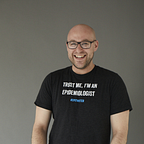Cancer Rates In Young People
Explaining the recent news about more cancer in people under 50
This week, there have been a swathe of scary new headlines about cancer in young people. If you’ve been paying attention to the news, rates of cancer in people under the age of 50 have been skyrocketing over the last decade, a trend that is as mysterious as it is scary.
But if you read the underlying research, the story isn’t so much scary as it is fascinating. This is the sort of research that is incredibly useful for public health experts, but it doesn’t necessarily mean all that much to the average person.
Let me explain.
The Research
The study that’s been causing all of these scary headlines is a fairly simple epidemiological paper looking at cancer diagnoses in the United States from 2010–2019. The authors took a large national database of cancer diagnoses across the US, and used this to calculate the yearly incidence — an epidemiological term meaning new diagnoses — per year, and then looked at the trends by type of cancer and demographic information for people under the age of 50.
